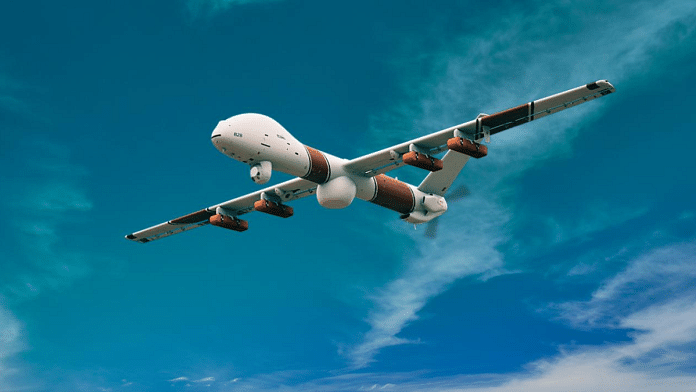New Delhi: India has dropped plans to arm its fleet of Israeli Heron Unmanned Aerial Vehicles (UAVs) and will now only upgrade Heron’s communication capability to satellite connectivity to allow them better endurance capabilities, ThePrint has learnt.
Sources in the defence establishment said that India is procuring a host of UAVs, including the Predator drones from the US, and hence it did not make sense to spend another nearly Rs 5,000 crore to arm the Heron drones under what was known as Project Cheetah.
It is expected that the 31 High Altitude Long Endurance (HALE) drones, MQ-9B, will be inducted into the Indian military over a period of next three-four years.
According to the plan, the Navy will get 15 MQ-9B drones in maritime and anti-submarine warfare kits, while the Army and the Indian Air Force (IAF) will get eight each of the land version.
In the original plan, India was pursuing Project Cheetah, under which the Herons, used by the military, were to undergo an upgrade in two phases.
In the first phase, the Army would have upgraded the Herons with the capability of satellite navigation and specialised sensors that can detect more clearly.
The Herons currently have an endurance of about 24 hours and can transmit back live video feed and images of about 200-250 km (range).
However, with satellite-linked drones, they will have almost unlimited range of transmission. This means that these systems can be fully exploited to their endurance capabilities.
Because of the tensions with China, the Army has already bought four Heron MK 2 which are satellite communication enabled with longer endurance of nearly 30 hours.
As far as Project Cheetah was concerned, the icing on the cake was the plan to arm them. Under the contract, the Israelis were to upgrade the Herons with the ability to not only undertake more specialised and longer surveillance missions but also precision strikes.
The upgraded Herons were to have the capability to carry and launch air-to-ground precision missiles.
“The plan to arm the Herons as part of the upgrade has been shelved,” a source said.
Sources said that the upgrade of the Heron drones would be done in India now.
“But the MQ-9Bs will fill in the void, backed by a number of loitering munitions that we have bought and are buying, besides the swarm drones which are being inducted,” a source said.
Asked if the number of 8 MQ-9B will be enough for the Army, the source said that the military is moving towards integrated operations and the overall numbers are sufficient.
Meanwhile, sources also argued that spending too much on arming drones makes no sense because the airspace that India has to fight in is heavily contested, unlike when an American just flies into countries without any air defence to strike at targets.
Also read: Same leave benefits as officers: Rajnath Singh approves parity in rules for women in armed forces
Army’s focus on drones
According to sources, going ahead, there will be a lot of focus on indigenous products and cited the procurement of Hermes Starliner drones that have the capability to fly for nearly 36 hours at a stretch.
“These drones are being bought under emergency procurement. The drone is being built in Hyderabad and only certain parts are coming in from Israel. Going ahead, all UAVs of MALE [medium altitude long endurance] categories will be procured domestically only,” another source said.
The drone is being manufactured by the Adani Group at its facility in Hyderabad in partnership with Israel’s Elbit Systems.
As reported by ThePrint earlier, the Army has seen massive emphasis on drone warfare.
Herons have been brought under the Army Aviation Corps from the Artillery to ensure that all flying assets of the Army remain as a single cohesive unit, sources said.
When the drones were first procured way back in early 2000s, the machines were primarily used for target sightings and hence it was under the artillery which had the long range.
Since the tensions with China began along the line of Actual Control in 2020, there has been an increased focus on aviation.
The Army has since then set up three Aviation Brigades, two for China and one for Pakistan. The sources said the Army will also set up two more.
(Edited by Smriti Sinha)
Also read: As IAF phases out yet another MiG-21 squadron, a look at the journey of the fighter aircraft



